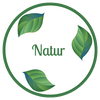|
Are you looking for a more eco-friendly bath or shower? Solid shampoo bars are the perfect solution to cut down on plastic waste.
0 Comments
Here's an ingredient you may not be so familiar with, so let's explore what Dragon's Blood Resin is and how we can use it.
The cosmetics industry generates approximately 120 billion units of packaging every year, the majority of which is plastic. The giants of the industry keep telling us they are reducing plastic use, but not fast enough. In the meantime, we're told to recycle our plastic bottles. But are recyclable plastic cosmetics bottles a sustainable option?
This ingredient is ubiquitous in skincare products, so here we dive into shea butter in more detail to see where it comes from and how it's used.
I believe that as consumers we should have the right to know not only what is in the products we buy, but also where it comes from and how it got there. That's why I list the country of origin and method of manufacture for all of the ingredients I use on the product pages. Most companies don't tell you this information, so you don't know what sort of refinement and processing each ingredient might have gone through or how many air-miles it's clocked up before being added to the product you purchase. I've worked hard to research each ingredient I use and find the best supplier I can for my chosen constituents. It's an ongoing process, so I'm always striving to improve. I like to use organic products where possible, but I always choose local first and foremost. All cosmetic ingredients are screened for harmful chemicals as a matter of course before sale, and just because an ingredient supplier doesn't have an organic certification, it doesn't necessarily mean that their ingredient hasn't been grown in an environmentally responsible way, as certification is an expensive and time-consuming process. Many of the ingredients I've selected are grown and produced right here in the U.K., which tends to make them more expensive, but the cost to the planet is greatly reduced. You may have heard of the skin-nourishing properties of exotic-sounding additives like safflower oil and murumuru butter, but if they have to be flown 1,000s of miles to get here, then they're not exactly nourishing for our planet. There's also no way to be sure that plants were harvested ethically and sustainably when they come from faraway countries with high poverty rates and a lack of regulation. Many a marketing executive for big cosmetic brands would have us believe that their star ingredient is the only way to get a certain effect, but the truth is that the same phytochemicals occur again and again across the plant kingdom, so the likelihood is that any particular chemical will be found in plants from around the world. This means that it is possible to get the same effect as an oil from the Amazon rainforest or the jungles of Southeast Asia, from a plant that grows much closer to home. I'm always happy to share more information about the ingredients I use, so if you have any questions, please feel free to get in touch. |
KateThoughts, musings, and ruminations on skincare and related topics. Categories
All
Archives
March 2024
|







 RSS Feed
RSS Feed
